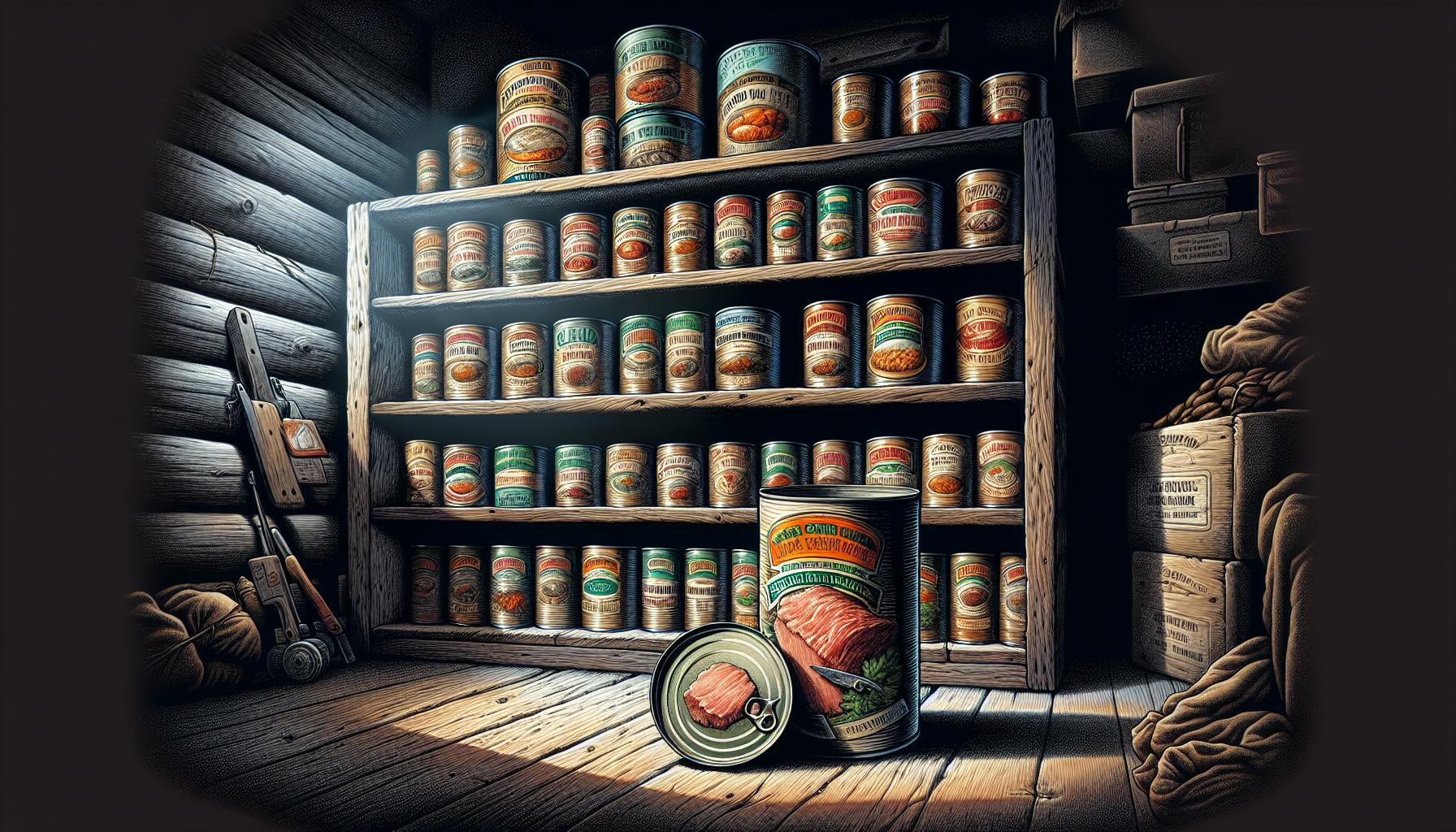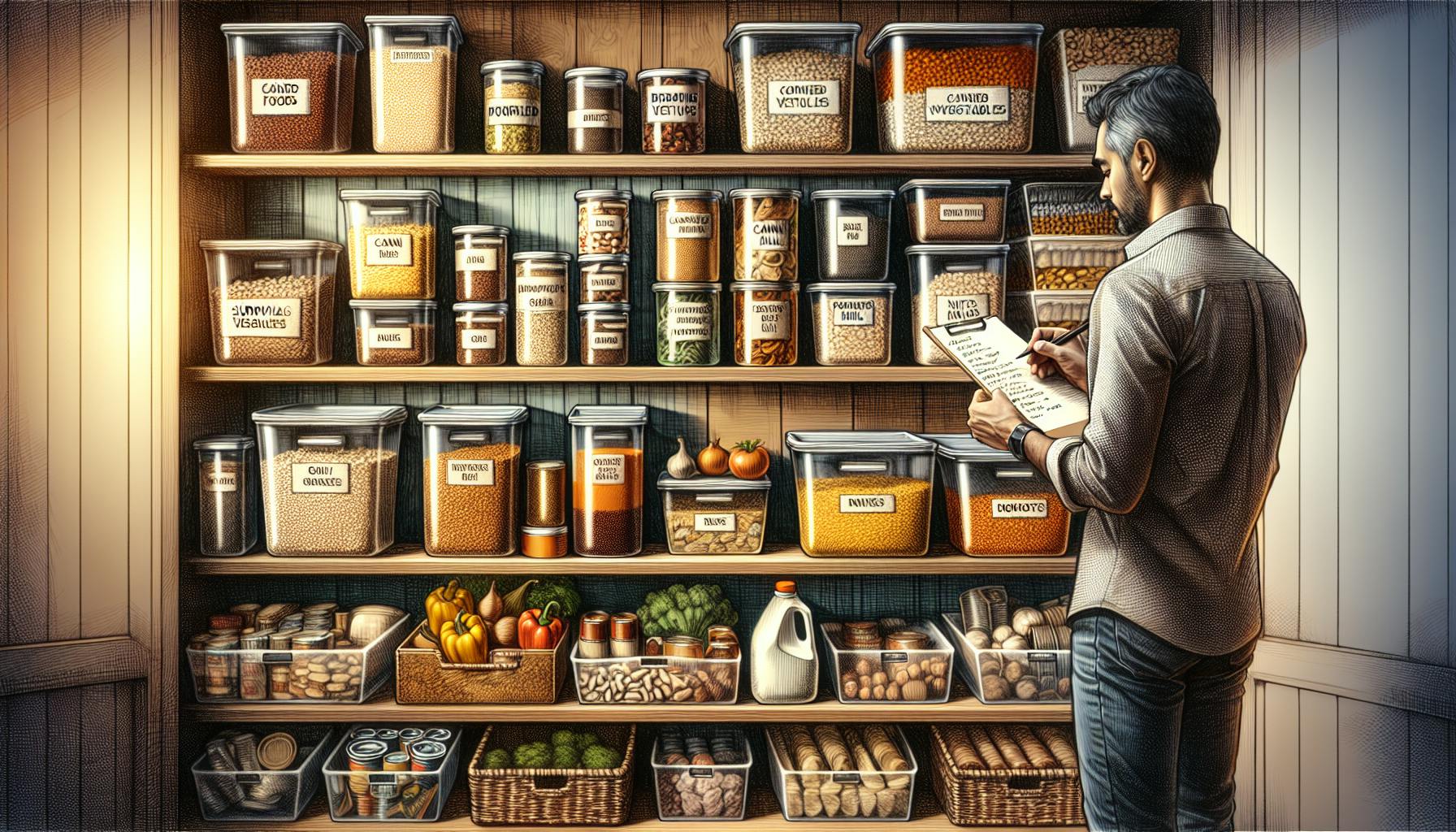Introduction to Canned Goods with Exceptional Shelf Lives
Canned goods have become a staple for emergency food supplies thanks to the canning process that allows certain foods to remain safely preserved for years or even decades when properly stored. Unlike fresh produce that spoils within days or weeks, specific varieties of expertly canned goods have exceptionally long shelf lives, providing lasting nutrition through times of crisis. Understanding why some canned foods keep longer than others and learning to identify those with maximum viable shelf life is key to building an well-stocked emergency pantry. This guide will provide an overview of canned goods with the longest shelf lives and tips to keep them at peak quality until ready for use.
Proper canning involves heating food to high temperatures to kill any bacteria before sealing the contents within an airtight can. This drives out oxygen and prevents new bacteria from entering and spoiling the food. However, not all canned goods keep equally as long - those with higher acidity, simpler ingredients, and less fat content resist spoilage longer. Maximizing shelf life also requires ideal storage conditions and careful inspection for any dents, rust, or other damage that could compromise the can's seal. With the right selection and storage of canned goods, you can feel confident your emergency food supplies will provide nutrition and sustenance when you need it most.
How Canning Enables Years of Shelf Life
The canning process enables canned goods to resist spoilage and maintain quality for years or decades when stored properly. Here's an overview of how it works:
-
Canning drives out oxygen and seals in food to prevent spoilage - Oxygen allows bacterial growth, so removing it preserves food. Sealing the can prevents new oxygen from entering.
-
The canning process kills bacteria through high heat pasteurization - Food is heated to 240-250°F, well above the temperature to destroy common food pathogens.
-
Vacuum sealing removes air pockets that allow bacterial growth - Air pockets provide space for bacteria to thrive. Vacuum sealing eliminates them.
-
Acidic canned foods like tomatoes inhibit bacterial growth even longer - Acidity creates an environment bacteria can't thrive in, keeping food safe.
-
Properly canned goods are shelf-stable and don't require refrigeration - The canning process makes food shelf-stable for years without chilling.
Stock Up on These Long-Lasting Canned Goods
Certain canned goods have properties that enable them to resist spoilage longer than others. Here are some of the specific varieties with the longest viable shelf lives:
-
Canned beans such as chickpeas, kidney beans, and black beans can last up to 5 years unopened when stored properly in a cool, dry place. Popular brands like Goya, Bush's, and Eden Organic have been proven to maintain quality.
-
Canned tuna and salmon typically keep 2-3 years past the printed best buy date if stored between 50°F and 70°F with minimal temperature fluctuations. Well-known brands like StarKist, Chicken of the Sea, and Bumble Bee are good choices.
-
Canned vegetables like carrots, peas, corn, and potatoes stay edible for 3-5 years after canning if kept in ideal conditions. Del Monte, Green Giant, and Libby's are reputable brands.
-
High-acid tomato products such as whole, crushed, sauce and paste can last 12-18 months after canning when stored in a cool, dry pantry. Contadina, Muir Glen, and Cento are excellent options.
-
Low-sodium canned broths and soups with minimal fat content remain safe for consumption 3-5 years when cans are kept dent-free in a room around 60°F. Look for Campbell's, Progresso, and Pacific.
Maximize Shelf Life Through Proper Storage
To get the most viability out of your canned goods for emergency preparedness, proper storage is key. Follow these tips to extend shelf life:
-
Store cans in a cool, dry place like a pantry around 50-70°F to prevent corrosion - Temperature fluctuations over 10°F can accelerate breakdown.
-
Avoid storage in garages, sheds, or areas with temperature swings beyond 10°F - Consistent moderate temps between 50-70°F preserve cans best.
-
Use cans within 1 year for peak quality, but most remain edible for years longer - Flavor, texture, and nutrition decline slowly over time.
-
Discard severely dented, rusted, or leaking cans which may cause spoilage - Any damage can allow bacteria to enter and grow.
-
Rotate stock using older cans first and replace them with new purchases - First In, First Out (FIFO) rotation maximizes freshness.
Identifying Cans with the Longest Viable Shelf Lives
Certain indicators can help identify which canned goods from your emergency reserves will last the longest:
-
Check expiration or 'best by' date and buy furthest out dates possible - Later dates mean newer canned stock.
-
Look for high-acid foods like tomatoes which resist bacteria - Acidity fights microbial growth for longer viability.
-
Choose single ingredient foods like beans over complex recipes - More ingredients means more opportunity for spoilage.
-
Select cans without dents, rust, swelling or leakage - Any damage can compromise the seal and shelf life.
-
Avoid cans with side seam damage or bulging tops - Even slight seam issues can shorten viability.
Signs of Spoilage in Canned Goods
When assessing older canned goods, look for these signs of possible spoilage:
-
Bulging or leaking cans indicate bacteria produced gas and compromised seal
-
Severe dents on seams or rims also suggest possible seal issues
-
Rust or corrosion demonstrate can integrity loss and oxygen introduction
-
Mold, sliminess, or stickiness around lid show bacteria growth
-
Off odors like sourness or fishiness mean contents are spoiled
-
Changes in color, texture, or consistency from normal also signal spoilage
Essential Canned Goods to Stockpile
Focus your long-term food storage on versatile, nutrient-dense canned goods with proven longevity. Recommended stockpile items include:
-
Canned beans like black, kidney, chickpeas, baked, and refried
-
Canned tuna, salmon, chicken, turkey, and other canned meats
-
Canned fruits like peaches, pears, mandarin oranges, pineapple, applesauce
-
Canned vegetables like peas, carrots, green beans, corn, potatoes, yams
-
Canned tomato products including sauce, diced, crushed, paste, puree
-
Canned soups and chili like Progresso, Campbell's, Hormel
-
Canned pumpkin, sweet potatoes, and root vegetables
-
Canned nuts, nut butters, coconut milk for fats and calories
-
Canned sardines, anchovies packed in oil for Omega-3s
-
Canned olives, roasted peppers, marinated artichoke hearts
Acquiring and Rotating Canned Goods
To build up a sufficient emergency supply:
-
Aim to stockpile approximately 6 months' worth of variety based on your consumption
-
Purchase small quantities every grocery trip to gradually grow inventory
-
Check expiration dates and acquire the furthest out dates possible
-
Implement a First In First Out system to rotate older cans to front and use first
-
Replenish supply with fresh cans as older ones are consumed
-
Take inventory 1-2 times per year and watch for approaching expiration dates
Conclusion and Key Takeaways
Having an ample supply of canned goods with long shelf lives is a cornerstone of emergency preparedness. Certain expertly canned foods remain viable for consumption for years or even decades when properly stored away from light and heat. Opt for high-acid foods like beans and tomatoes in simple recipes without added fat, and inspect cans closely for damage prior to stockpiling. With the right selection and storage of canned goods, you can ensure access to essential nutrition through any crisis that may arise. The key is sticking to varieties proven to deliver long-lasting viability and following ideal storage conditions to maximize shelf life until these emergency rations are needed most.
-
Properly canned goods can remain edible and nutritious for years after packaging
-
High-acid and single ingredient foods have the longest viable shelf lives
-
Follow best storage practices and rotation to maximize shelf life
-
Inspect cans and watch for signs of spoilage
-
Stock up on versatile canned goods like beans, tuna, and vegetables


